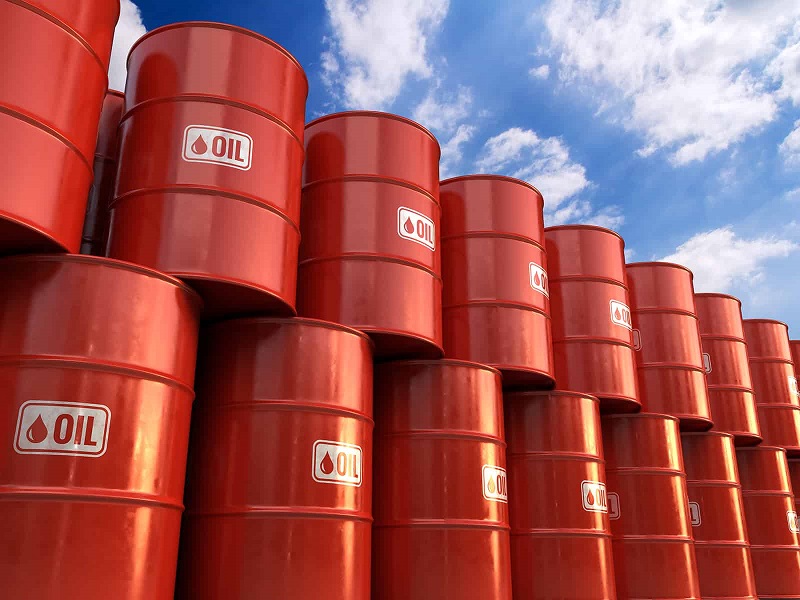Last Updated: Mar 31, 2025 09:06:03 AM (GMT)
USOIL: The current market price is 69.05, reflecting a decrease of 0.23% from the previous close.
Support and Resistance Levels The current support levels are 68.90, 68.75, and 68.60, while resistance levels are 69.20, 69.35, and 69.50, with a pivot point at 69.00.
Indicators The RSI is at 57.82, indicating bullish momentum, while the ATR is 0.29257, suggesting low volatility. The ADX shows a value of 20.95, indicating a weak trend, and the Parabolic SAR suggests an upward trend.
Market Sentiment The market presents a market-neutral outlook, as prices hover just above the pivot point (69.00).
USOIL Signals & Technical Analysis
Market Sentiment
Trend Indicators
Oscillators
Moving Averages
Pivot
US Crude Oil (USOIL) Technical Analysis
Crude oil, commonly known as petroleum, is a liquid found within the Earth and is comprised of hydrocarbons, organic compounds, and small amounts of metal. It’s often referred to as “black gold.” It’s nicknamed US Oil, CL & WTI.
Breaking Down "WTI Crude Oil"
Crude oil is one of the most demanded products globally, and its rates have risen significantly in recent times, both as a result of supply-chain bottlenecks and the war in Ukraine.
Two main benchmarks for pricing crude oil are the United States' WTI (West Texas Intermediate) and United Kingdom's Brent. The differences between WTI and Brent involve not only price but oil type as well. WTI produces crude oil with a different density and sulfur content.
The demand for crude oil is dependent on global economic conditions as well as market speculation. For example, oil prices plummeted during the Coronavirus pandemic due to decreased demand, even reaching negative pricing in April 2020. Crude oil prices are commonly denominated in US dollars.
History and Background of Oil Extraction and Consumption
Now that we know where the most ‘black gold’ is found, let’s briefly look at where and when oil was first extracted in large quantities.
In 1859, a man drilled a hole on a farm in Pennsylvania and struck oil at about 70 feet. The oil quickly filled the gap.
Since that day, oil extraction quickly increased in the region, and three years later, the oil entrepreneurs were extracting this commodity at an annual rate of about 3 million barrels.
Back then, only a specific part of the unrefined oil was utilized – kerosene, which was used for lighting.
Soon after Thomas Edison invented the incandescent lightbulb in 1879, the demand for kerosene and, consequently, oil began to deteriorate.
Soon after this, however, cars driven by internal combustion engines appeared on the scene. The demand for gasoline surged, and within a decade, it was selling faster than kerosene.
By 1956, Americans owned more than 50 million cars. The demand for gasoline was driving oil extraction activities at a rapid pace. Military exercises also consumed a lot of oil, as the war in Vietnam picked up.
Of course, oil extraction wasn’t limited to the United States alone. As the demand for oil increased, oil extracting activities spread to many other places in the world, including Mexico, the Middle East, Canada, and Russia.
These days, millions of barrels of oil are extracted daily to supply the world’s massive energy demand. In 2016, oil demand was 97m barrels per day globally. This equates to 5 barrels of oil per person a year.
Let’s take a look at which countries produce the most oil.
Countries With the Largest Oil Reserves
The Middle East is incredibly rich in oil reserves, and a substantial part of the world’s oil is extracted in this region.
However, the country with the largest proven oil reserves in the world is Venezuela. Let’s take a look at which states have the largest reserves of unextracted oil as of 2022, according to BP.
Venezuela: 303.8 billion barrels, or 17.5% of the world’s supply.
Saudi Arabia: 297.5 billion barrels, or 17.2% of the world’s supply.
Canada: 168.1 billion barrels, or 9.7% of the world’s supply.
Iran: 157.8 billion barrels, or 9.1% of the world’s supply.
Iraq: 145.0 billion barrels, or 8.4% of the world’s supply.
Russia: 107.8 billion barrels, or 6.2% of the world’s supply.
Kuwait: 101.5 billion barrels, or 5.9% of the world’s supply.
United Arab Emirates: 97.8 billion barrels, or 5.6% of the world’s supply.
United States: 68.8 billion barrels, or 4% of the world’s supply.
Libya: 48.4 billion barrels, or 2.8% of the world’s supply.
In other words, these 10 countries make up 86.4% of the world’s oil reserves.
How to Trade Crude Oil?
Trading a contract for difference (CFD) on crude oil is not complicated. By buying or selling a crude oil CFD in response to one of our crude oil trading signals, you participate in the price movement of the black gold without actually owning it physically. It’s traded exactly like a currency pair. The only difference is that you’re buying or selling crude oil against the US dollar.
What Determines the Crude Oil Exchange Rate?
Events that impact or have the potential to change the supply or demand of oil tend to move the oil price.
Obviously, production and consumption data also impact the oil price. For example, if the United States crude oil inventories reveal that there’s recently been a strong draw from US energy reserves, we know that energy consumption, and hence, the demand for oil, has increased.
An increase in the demand for oil will put upward pressure on the oil prices, except if the oil supply increases at the same rate or faster. Conversely, when data is released which shows that the demand for oil is waning, it could put downward pressure on oil prices.
News on OPEC’s (Organization of the Petroleum Exporting Countries) oil production can have a significant impact on the price of oil. For example, if they decide to cut oil production, it can cause the oil prices to rise sharply in a short period as investors and speculators quickly buy oil to gain from the expected rise in oil prices due to the anticipated reduction of oil supply. The top oil-producing countries are often unstable geopolitically, which also influences OPEC’s policies.
Technological innovations have also had a historical impact on crude oil prices. Hydraulic fracturing, or fracking, has allowed significantly more oil to be extracted from the Earth’s crust, increasing worldwide supply and dampening oil prices.
Lastly, seasonal demand also has an effect on oil prices, similar to natural gas. Demand is generally higher during summer and winter, with more driving in the summer and more heating oil used in the winter. There have also been instances where poor winter weather has substantially disrupted oil supplies, causing prices to spike temporarily.
Crude Oil Specifications
Crude Oil is traded in amounts denominated in the US Dollar
Standard lot Size: 10 Barrels.
One pip in decimals 0.01
Pip Value: $1
Formula
Profit/Loss = (Bid Price – Ask Price) X Contract Size X Number of Lots
The oil and gas sector is an advantageous option for both intraday traders and long-term investors. This sector provides a highly active and liquid market, which serves as an effective portfolio diversifier and inflationary hedging vehicle.
It is anticipated that the average price will remain at approximately $90 between 2024 and 2027, with a slight decrease predicted for the latter portion of this period. There are projections that oil prices will experience minor downtrends in 2023, but stabilize and rise by the end of the year.
The rise in U.S. oil exports has led to a decrease in imports, thus mitigating the impact of higher oil prices on the U.S. trade deficit. Consequently, the inverse relationship between oil prices and the U.S. dollar, which is traditionally quite strong, is becoming less reliable.
Analysis of production and consumption data indicates that a rise in demand for oil will likely result in an increase in oil prices, barring a concomitant or greater rise in oil supply. Noteworthy is the influence of OPEC's (Organization of the Petroleum Exporting Countries) Oil Production news as well as technological innovations such as Hydraulic Fracturing (fracking) and seasonal demand on crude oil prices throughout history.




